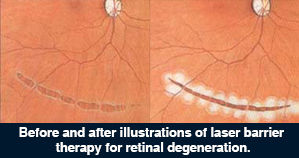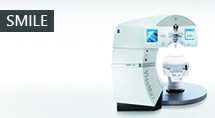Retinal Detachment
What is retinal detachment?

When the vitreous humour contracts, it may cause breaks in the retina. When fluid seeps under the retina through these retinal breaks, the retina will become detached.
What are the signs for retinal detachment?
During the acute phase of a retinal detachment, the patient may experience:

An increase in floaters
Seeing flashes of light, development of a shadow like a curtain in the peripheral vision
Blurring of vision
Who are more at risk of retinal detachment?
Those with thinning of the retina.
High myopia (Short sightedness).
Positive family history.
History of trauma to the eye or head.
Can retinal detachment be prevented?

Retinal detachment cannot be prevented by medication. If retinal breaks are recognised early by an ophthalmologist through examination with pupil dilation, laser barrier or cryotherapy may be applied to seal off such breaks, thereby prevent the development of retinal detachment. Therefore the most effective prevention is to be aware of the warning signs such as floaters and light flashes, and seek the help of an ophthalmologist promptly for a complete eye examination. For those with severe short-sightedness, it is advisable to avoid contact sports and have regular check ups.
Can retinal detachment be repaired?
Retinal detachment is a serious situation, and surgery to repair retinal detachment is complicated. The success rate may be up to 90%, but multiple surgeries are at times required. There are basically two categories of surgeries: by the insertion of an explants onto the sclera in the form of a silicone band or buckle then application of cryotherapy to the retinal breaks, or by pars plana vitrectomy where the laser is applied to seal off the retinal breaks and gas may be injected in place of the vitreous removed in order to flatten the retina.






